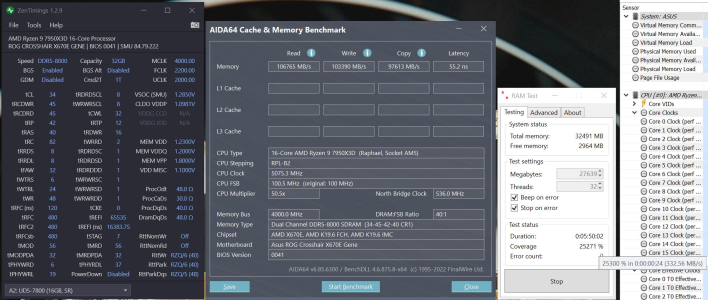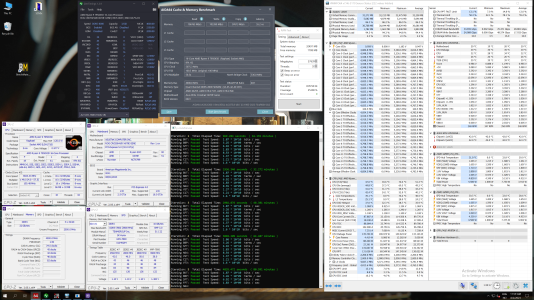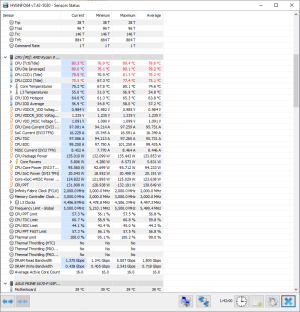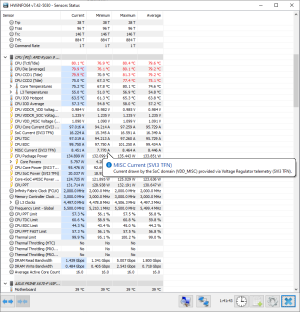Did a little 1:1 mode vs 2:1 mode memory comparison in
clamchowder/MicrobenchmarksGui with maxed out memory timings on a other forum, but think i can share results here also

My goal was manly to take a closer look the performance numbers for single CCD cpus and show why 2:1 mode are wasted on these cpus since they are purely limited by FCLK. (everything above ~5800MT/s can fully saturate the maximum ~70k GB/s bandwidth @ 2200FCLK)
But ofcourse i also did comparison with all 16 cores enabled we can look at first:
Settings used for all tests:
7950x3d
Asus x670e GENE
32gigs teamgroup 7800 a-die (all memory settings have been tested stable to over 10k in Karhu)
12-16 core dual CCD cpu:
8000/2200 ~ 6600/2200
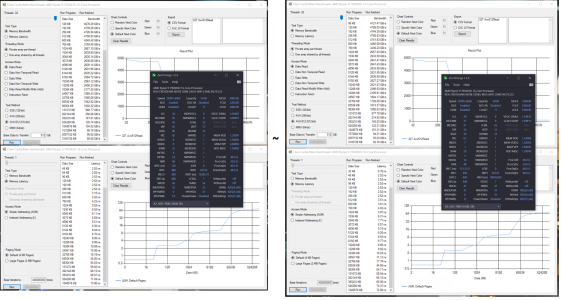
2:1 mode have 3.24GB/s higher read bandwidth but 1.1ns worse latency compared to 1:1 mode on my system.
Everything pretty much as expected, dual CCD cpus is the only place where 2:1 makes sense from a performance standpoint. Both setups can be pretty even performancewise depending on what you benchmark them in, but overall i would
maybe say the 2:1 profile is faster, something which will be especially true when 82 and 84 memory multiplier get unlocked in the future.
Next up we disable the frequency CCD and simulate a 7800x3d which was my main interest for this comparison
6-8 core single CCD CPU:
6600/2200 vs 6400/2133 vs 8000/2200 vs 8000/2000

Big screenshot with lots of information to digest above, so have condest it some to make it easier to only look at the dram memory performance alone.
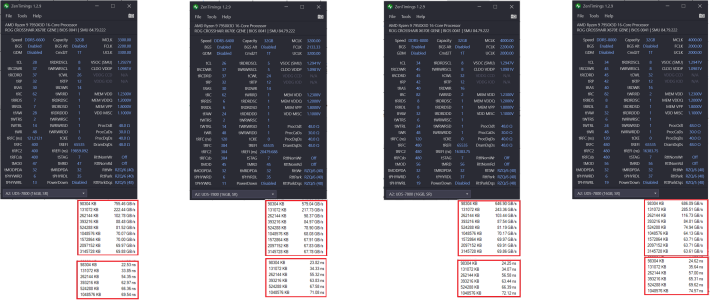
Think this paints a pretty clear picture, single CCD cpus are missing the GMI links to take advantage of the extra bandwidth afforded by 2:1 mode, which means they are solely capped by FCLK speed. Its only dual CCD cpus that can take advantage 2:1 mode since the IO-die is serving two CCDs instead if one.
The numbers are also showing that we are paying a latency tax for running the memory controller (UCLK) at half speed, something we cant make up for with todays max memory-limit at 8000MT/s (higher mem multipliers are bugged in ageisa, only way higher is by baseclock)
Performance ranking end up at 6600/2200 > 6400/2133 > 8000/2200 > 8000/2000
For single CCD cpus i would always say a proper 1:1 6400MT/s 2133mhz FCLK tune should be the goal






